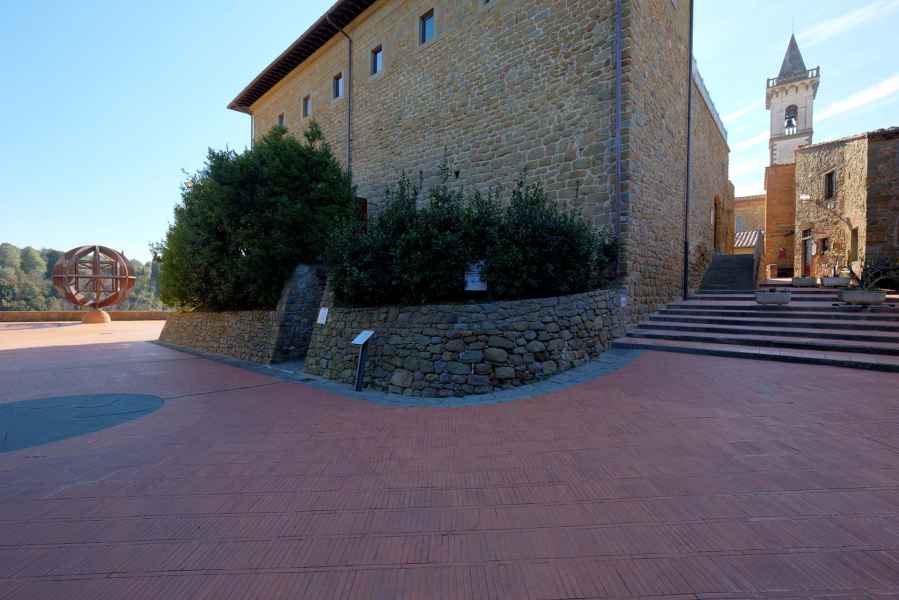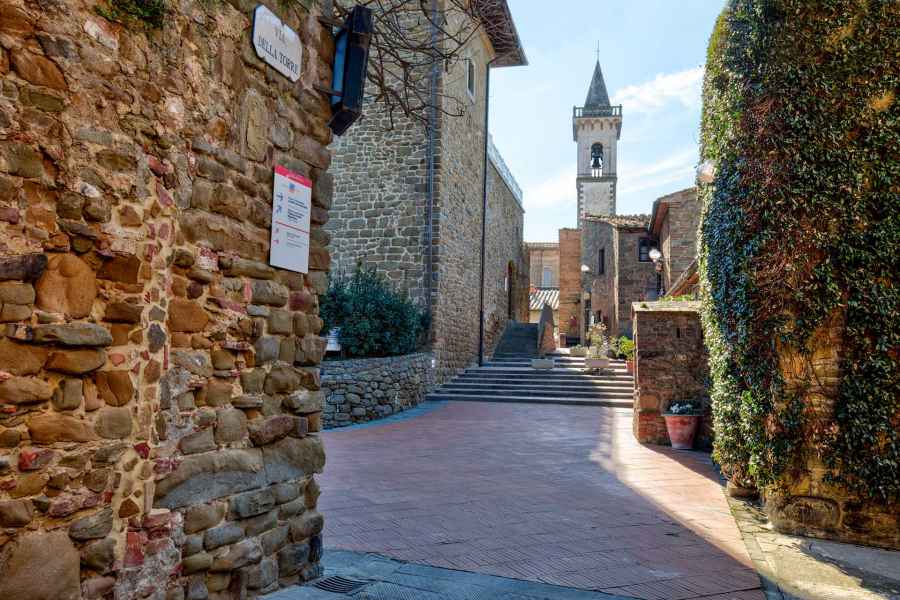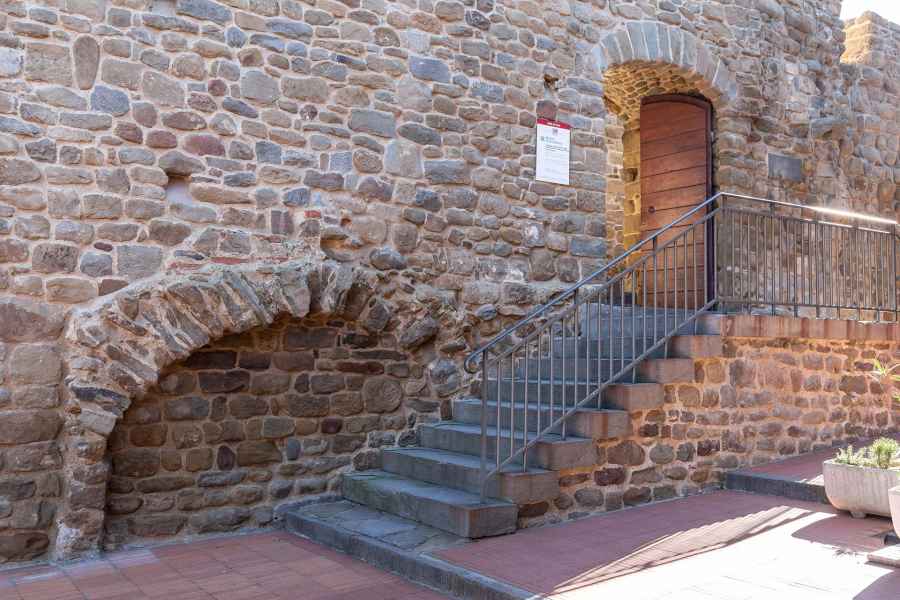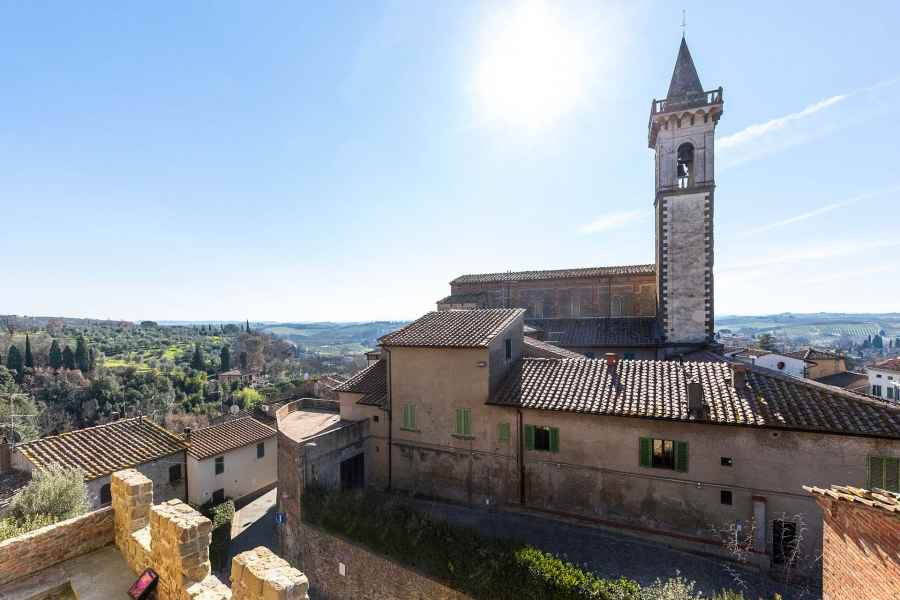The current appearance of the Vincian fortress, with the imposing tower keep of the Counts Guidi, allows us to appreciate the most ancient phase of its history. The fortress complex, with the buildings that were added to the Guidi tower from the Middle Ages onward, now houses the Museo Leonardiano, dedicated to the Genius of Vinci who was born here. Leonardo spent the years of childhood and early youth in Vinci, and the surroundings of the castle were his first sources of observation and knowledge. When Leonardo drew, at the beginning of the 16th century, the famous bird's eye view of the Windsor Castle collection (RL 12685), he represented the castle of Vinci, on the southern side of Montalbano, showing morphological details demonstrating that he knew the place well. Leonardo’s Vinci is represented as having an upper part surrounded by walls, where there are two building complexes, identifiable as the fortress and the castle church. At the foot of the castle we can see the buildings of the village. This is the oldest representation of the castle of Vinci, which shows, even in Leonardo’s time, the form it had assumed during the Late Middle Ages.
- Anchiano - Leonardo’s Birth House
- Biblioteca Leonardiana
- Cerreto Guidi
- Church of Santa Croce
- Empoli
- Mill of La Doccia
- Mimmo Paladino's Piazza Guidi
- Tavern-Butcher Shop of the village of Vinci, at the Androne Ciofi
- The bronze horse of Leonardo, created by Nina Akamu
- The houses of the da Vinci family
- The Municipal Mill
- The Vitruvian Man by Mario Ceroli
Error
- Anchiano - Leonardo’s Birth House
- Biblioteca Leonardiana
- Cerreto Guidi
- Church of Santa Croce
- Empoli
- Mill of La Doccia
- Mimmo Paladino's Piazza Guidi
- Tavern-Butcher Shop of the village of Vinci, at the Androne Ciofi
- The bronze horse of Leonardo, created by Nina Akamu
- The houses of the da Vinci family
- The Municipal Mill
- The Vitruvian Man by Mario Ceroli









